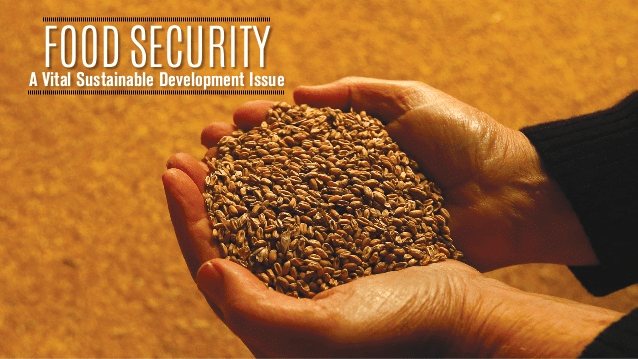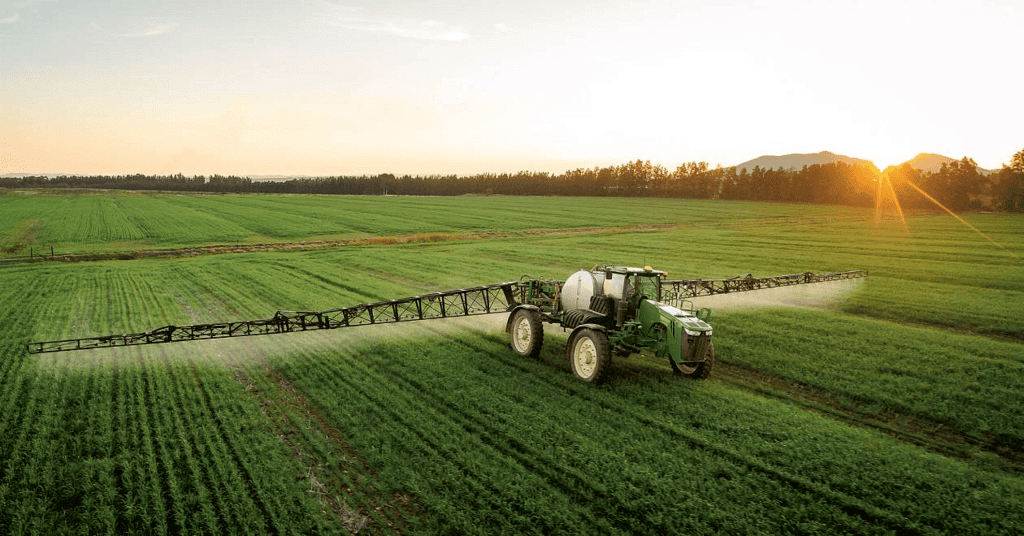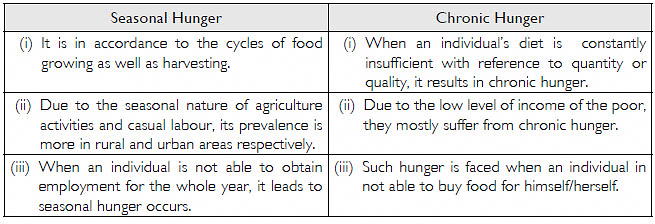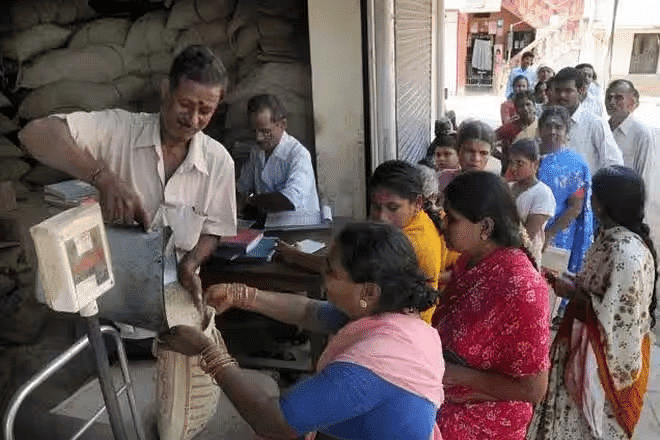NCERT Solutions for Class 9 Economics Chapter 4 - Food Security in India

Q1. How is food security ensured in India?
Ans: Food security is ensured in a country when the three dimensions of food security are taken care of. The three dimensions are:
Availability of food − Presence of enough food for all the persons
Accessibility of food − Absence of barrier on access to food
Affordability of food − Capability of all persons to buy food of acceptable quality
Food security has been ensured in India because of the following factors.
- Self-sufficiency of food grains − India has become self-sufficient in food grains (as was its aim since Independence) during the last thirty years. This has been because of a variety of crops grown all over the country.
- Food-security system − The availability of food grains has been ensured by the government with the help of a carefully designed food-security system. This system involves the maintenance of a buffer stock of food grains and the distribution of this food among the poorer sections of the society with the help of a public distribution system.
- Implementation of several poverty-alleviation programmes having an explicit food security component − Apart from the distribution of food through fair-price shops, the government has come up with several poverty-alleviation programmes that enhance food security; for example, mid-day meals and food-for-work.
- Involvement of cooperatives and NGOs − In addition to the role of the government in ensuring food security, various cooperatives and NGOs are also working intensively towards this direction. Mother Dairy and Amul are two examples of cooperatives involved in ensuring food security.
Q2. Which are the people more prone to food insecurity?
Ans: A large section of people in India faces food and nutrition insecurity, with the worst affected groups including:
- People in low-income occupations like traditional crafts, small-scale services, and subsistence farming, often without land ownership.
- Individuals in informal sectors with unstable jobs, low wages, and seasonal work patterns.
- Socially disadvantaged groups such as Scheduled Castes (SCs), Scheduled Tribes (STs), and Other Backward Classes (OBCs) facing economic challenges due to historical inequalities.
- Areas suffering from poverty, lack of infrastructure, isolation, and vulnerability to natural calamities.
- Particularly vulnerable due to physiological needs and dependence, including pregnant and nursing mothers, and children under five years old.
Q3. Which states are more food insecure in India?
Ans: The economically-backwards states with a high incidence of poverty are more food insecure in India. The states of Uttar Pradesh (eastern and south-eastern parts), Bihar, Jharkhand, Orissa, West Bengal, Chattisgarh, parts of Madhya Pradesh and Maharashtra account for the largest number of food-insecure people in the country.
Q4. Do you believe that Green Revolution has made India self-sufficient in food grains? How?
Ans: The Green revolution has made India self-sufficient in food grain in following ways:
- In the late 1960s, the Green Revolution introduced high-yielding varieties (HYVs) of seeds to Indian farmers, along with chemical fertilizers and pesticides, boosting productivity, especially in wheat and rice.
- The increased productivity allowed India to become self-sufficient in food grains, producing enough to meet its own needs without heavy reliance on imports.
- India has avoided famines even in tough weather conditions, thanks to diverse crop production and food security measures.
- The steady availability of food grains enabled the government to establish a robust food security framework, ensuring access to food during challenging times.
- The Green Revolution's innovations in wheat and rice production have made India self-reliant in food grains, preventing famines and supporting overall food security.
 Green Revolution in India
Green Revolution in India
Q5. “A section of people in India are still without food”. Explain.
Ans: India has achieved self-sufficiency in food grains due to the Green Revolution, many people still face food insecurity, mainly due to poverty.
- Landless laborers, casual urban workers, Scheduled Castes (SCs), and Scheduled Tribes (STs) below the poverty line struggle to access regular meals.
- The PDS faces problems, such as ration shop owners diverting grains to the open market instead of distributing them to the needy.
- Low-quality grains in ration shops often remain unsold, making food access even harder for vulnerable groups.
- Corruption in the PDS and widespread poverty are the main reasons why some people still go hungry despite the country's self-sufficiency in food production.
Q6. What happens to the supply of food when there is a disaster or a calamity?
Ans: When there is a disaster or a calamity, the production of food grains decreases in the affected area. This in turn creates a shortage of food in the area. Due to the food shortage, the prices go up. The raised prices of food materials affect the capacity of many people to buy the same. When the calamity occurs in a very widespread area or is stretched over a long period of time, it may cause a situation of starvation. Massive starvation can take the form of famine.
Q7. Differentiate between seasonal hunger and chronic hunger?
Ans: Difference between seasonal hunger and chronic hunger are as follows:
Q8. What has our government done to provide food security to the poor? Discuss any two schemes launched by the government?
Ans: The Government of India has implemented various schemes to ensure food security for the poor. Two notable schemes are:
Antyodaya Anna Yojana (AAY): Launched in December 2000, AAY targets the "poorest of the poor" among Below Poverty Line (BPL) families. Initially, it covered one crore (10 million) families, providing 25 kg of food grains per month at highly subsidized rates (₹2/kg for wheat and ₹3/kg for rice). In April 2002, the allocation increased to 35 kg per month. The scheme expanded in 2003 and 2004, covering an additional 50 lakh (5 million) families each time, ultimately reaching 2 crore (20 million) families.
Annapurna Scheme (APS): Launched in 2000, APS targets indigent senior citizens aged 65 and above who are eligible for but not receiving old age pensions. It provides 10 kg of food grains per month free of cost, ensuring basic nutrition for senior citizens without regular income or family support.
Q9. Why is a buffer stock created by the government?
Ans: A buffer stock of food grains is created by the government so as to distribute the procured food grains in the food deficit areas and among the poorer strata of society at a price lower than the market price. A buffer stock helps resolve the problem of shortage of food during adverse weather conditions or during periods of calamity.
Q10. Write notes on:
(a) Minimum support price
(b) Buffer stock
(c) Issue price
(d) Fair-price shops
Ans: (a) Minimum support price − The Minimum Support Price (MSP) is the price at which the government buys food grains from farmers to build a buffer stock and encourage production. However, rising MSPs for rice and wheat have led farmers to shift land from coarse grains to these more profitable crops, resulting in higher procurement costs.
(b) Buffer stock − A buffer stock consists of food grains, typically wheat and rice, procured by the government through the Food Corporation of India and stored in granaries. This stock is created to distribute food in deficit areas and to poorer sections of society at prices lower than the market rate. It helps address food shortages during adverse weather or calamities.
(c) Issue Price − The food grains procured and stored by the government are distributed in food-deficit areas and among the poorer strata of society at a price lower than the market price. This price is known as the issue price.
(d) Fair-price shops − The Food Corporation of India distributes food through government-regulated ration shops, known as fair-price shops, where items are sold at lower prices than the market rate to benefit poorer families. These shops stock food grains, sugar, and kerosene oil. Families with a ration card can purchase a specified amount of these items each month.
Q11. What are the problems of the functioning of ration shops?
Ans: The problems of the functioning of ration shops are as follows:
- Food grains provided by ration shops are insufficient to meet the needs of the poor, forcing them to supplement from market sources.
- Many ration shop dealers engage in malpractices such as diverting grains to open markets for higher profits and selling poor quality grains at the shops.
- On average, individuals receive only 1 kg of PDS grains per month nationwide, which is significantly below adequate consumption levels
- Homeless individuals are often excluded from receiving ration cards, as they require a residential address for issuance.
 Ration Shop
Ration Shop
Q12. Write a note on the role of cooperatives in providing food and related items.
Ans: Role of Cooperatives in Food Security are as follows:
- Cooperatives are crucial alongside the government in ensuring food security in India, particularly in the southern and western regions.
- Around 94% of fair price shops in Tamil Nadu are operated by cooperatives, providing affordable goods to the poor.
- Mother Dairy in Delhi sells milk and vegetables at government-set rates, contributing to accessible food supply in the capital.
- Amul, known for its milk and milk products, spearheaded the White Revolution in India, enhancing milk availability nationwide.
- The Academy of Development Science (ADS) in Maharashtra establishes Grain Banks and conducts training programs for NGOs on food security, influencing government policies.
|
63 videos|525 docs|78 tests
|
FAQs on NCERT Solutions for Class 9 Economics Chapter 4 - Food Security in India
| 1. What is food security and why is it important in India? |  |
| 2. What are the major challenges to food security in India? |  |
| 3. How does the government of India address food security? |  |
| 4. What role does the National Food Security Act play in ensuring food security in India? |  |
| 5. How can individuals contribute to food security in their communities? |  |

















